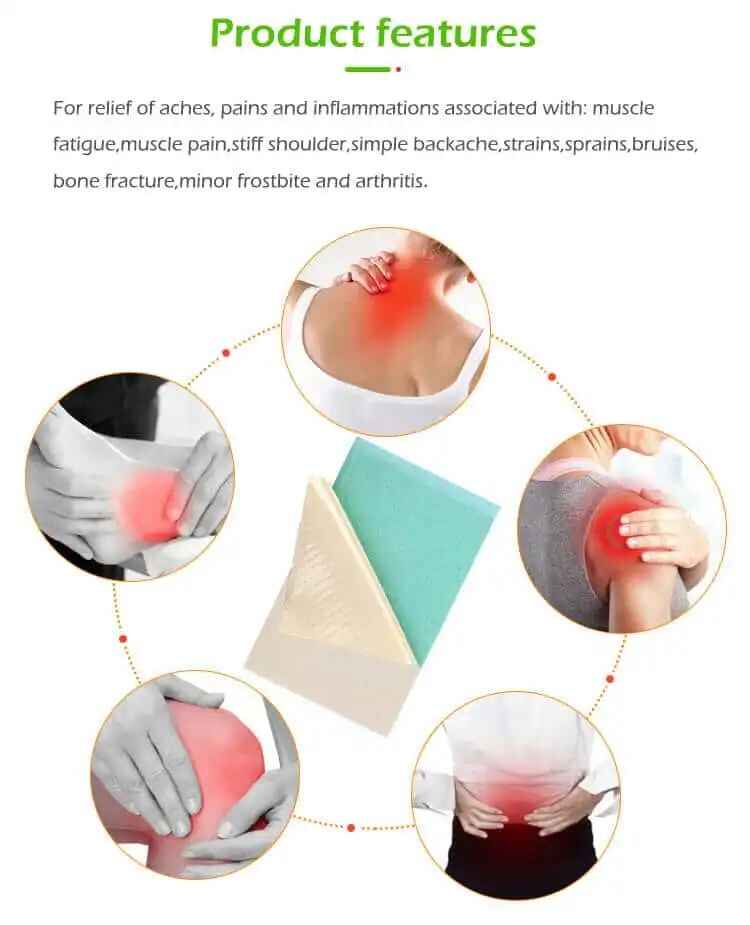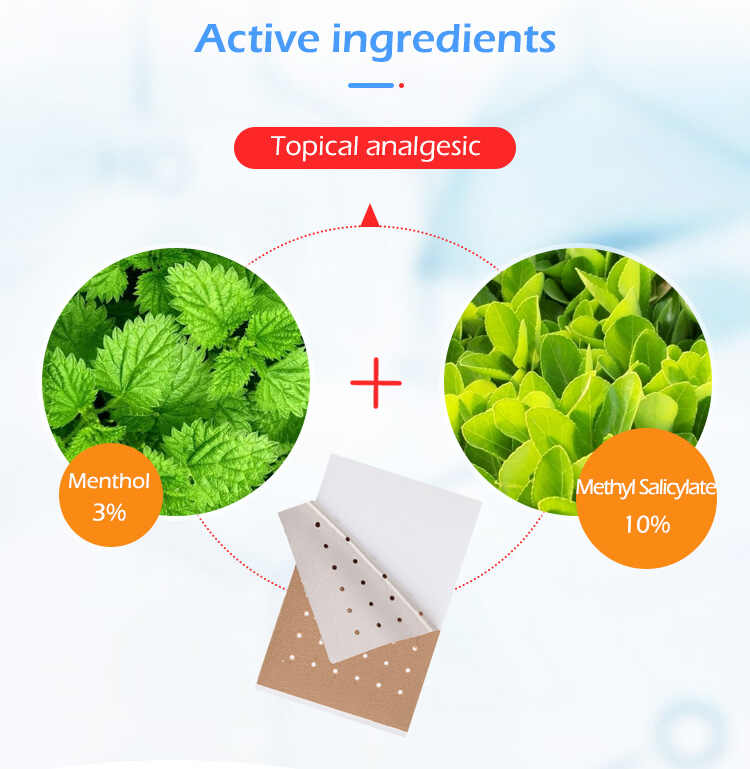How Long Does It Take to Develop a Private Label Chronic Pain Patch?
As demand for transdermal pain relief products continues to rise, many wellness and healthcare brands are exploring Private Label Chronic Pain Patches as a lucrative product opportunity. But one of the most frequent and important questions from new entrants to the market is: “How long does it take to develop a Private Label Chronic Pain Patch?”
This is a valid concern for brand owners, especially those with tight launch schedules or seasonal sales targets. In this comprehensive guide, we break down each phase of development—from concept to launch—and explain the typical timelines you can expect when working with a Chronic Pain Patches Manufacturer, Chronic Pain Patches OEM, or Chronic Pain Patches Supplier. Whether you're looking to create Custom Chronic Pain Patches with unique formulas or need fast turnaround on proven templates, this article offers clarity and direction.

1. Understanding the Private Label Chronic Pain Patch Development Lifecycle
Developing Private Label Chronic Pain Patches involves several critical stages. Each step contributes to the final product’s performance, safety, branding, and market success.
Here’s a breakdown of the standard process and average timeframes involved:
| Stage | Activity | Estimated Duration |
|---|---|---|
| 1. Initial Consultation & Requirements | Define product goals, ingredients, format, target market | 1–2 weeks |
| 2. Formulation & Prototype Development | Create and test sample patches | 2–6 weeks |
| 3. Stability & Efficacy Testing | Ensure consistent release and shelf-life | 4–8 weeks |
| 4. Regulatory Compliance Review | Review labeling, safety documentation | 2–4 weeks |
| 5. Packaging Design & Production | Develop packaging artwork and materials | 3–5 weeks |
| 6. Final Manufacturing & Fulfillment | Full-scale production and shipment | 4–6 weeks |
Total Estimated Time: 3 to 5 Months
However, timelines may vary depending on whether you're creating Custom Chronic Pain Patches from scratch or using an existing OEM formula with your branding.
2. Factors That Influence Development Time
Not all projects follow the same path. Here are key factors that can either speed up or delay your Private Label Chronic Pain Patches:
A. Product Complexity
Simple OEM White-Label Product
Uses pre-approved formulations offered by the Chronic Pain Patches Supplier. These are fastest to market—sometimes in as little as 6–8 weeks.Custom Chronic Pain Patches
Require new ingredient blends, stability testing, and potentially regulatory review—adding up to 8–20 additional weeks.
B. Ingredient Selection and Availability
Some ingredients (e.g., CBD, arnica, curcumin) may have supply chain restrictions or require additional regulatory documentation, which may affect sourcing time.
A seasoned Chronic Pain Patches Manufacturer will usually have stock or reliable sources for high-demand compounds, minimizing delays.
C. Compliance with Local Regulations
Each region has its own laws regarding product classification (e.g., cosmetic vs. OTC drug). The more complex the regulation, the more time may be needed for approvals.
A Chronic Pain Patches OEM with global export experience will significantly reduce this step’s timeline.
D. Branding and Packaging Requirements
Pre-Designed Templates: Fast, low customization.
Custom Packaging with Die-Cuts, Foil, etc.: Slower, but unique.
Design, printing, and approval of artwork can take 3–5 weeks depending on revisions and supplier lead times.
3. Fast-Track Options: When Time-to-Market Is Critical
If you need to launch quickly, here are some proven methods to speed up development:
✔ Choose an Existing OEM Formula
Many Chronic Pain Patches OEM providers have ready-to-go formulas with proven efficacy, regulatory documentation, and test data. You only need to provide your branding, and the rest is handled for you.
Timeline: 6–10 weeks
✔ Use In-House Packaging Solutions
Some Chronic Pain Patches Manufacturer companies offer standardized pouch and box templates. This saves time in dieline creation, proofing, and printing.
✔ Partner with a Full-Service Supplier
A full-service Chronic Pain Patches Supplier handles everything from R&D to packaging and logistics. This eliminates back-and-forth with multiple vendors and accelerates the overall process.
4. The Role of a Chronic Pain Patches Manufacturer or OEM
When launching Private Label Chronic Pain Patches, your choice of manufacturing partner is one of the most critical decisions. A competent Chronic Pain Patches OEM will:
Offer a catalog of clinically-tested formulas
Assist with ingredient customization
Provide in-house testing and quality assurance
Ensure regulatory compliance in your target market
Deliver reliable lead times for reorders
Whether you’re launching Custom Chronic Pain Patches for athletes, arthritis sufferers, or general wellness consumers, your OEM or Chronic Pain Patches Supplier should act as a strategic extension of your brand.
5. Sample Development Timeline for Private Label Chronic Pain Patches
Here’s a sample schedule for a brand developing a semi-custom patch with a Chronic Pain Patches Manufacturer:
| Week | Milestone |
|---|---|
| 1–2 | Initial product brief & ingredient discussion |
| 3–6 | Sample creation and lab testing |
| 7–10 | Feedback loop, adjustments, packaging design |
| 11–13 | Compliance check and final sample approval |
| 14–18 | Manufacturing, quality control, and shipping |
Tip: Always build in a buffer of 2–3 weeks to allow for unexpected changes or feedback cycles.
6. Common Challenges That Can Delay Launch
Avoid unnecessary delays by anticipating these common issues:
Unclear Product Specifications: Be clear about pain type (joint, muscle, nerve), usage duration, and preferred sensation (cooling, warming, neutral).
Ingredient Substitutions: If sourcing fails, you may need alternatives that meet similar therapeutic goals.
Packaging Errors: Mistakes in text, barcodes, or label claims can delay launch by weeks.
Regulatory Misalignment: Selling in different markets (e.g., US vs. EU) may require different labeling and documentation.
Your Chronic Pain Patches Supplier should provide project management support to help you navigate these areas smoothly.
7. Tips to Accelerate Product Development
Start with a clear product brief
Choose a reputable Chronic Pain Patches OEM
Opt for an existing patch formula if new to market
Use standard packaging options to minimize delays
Approve samples and artwork promptly
Request realistic timelines—and plan backward from your launch goal
A good Chronic Pain Patches Manufacturer will provide you with a Gantt chart or production roadmap to keep your project on track.
Conclusion
So, how long does it take to develop a Private Label Chronic Pain Patch? The answer largely depends on your level of customization, ingredient choices, and packaging needs. On average, the entire process takes 3 to 5 months, but fast-track options exist that can bring a product to market in as little as 6–10 weeks.
The key to timely development lies in partnering with the right Chronic Pain Patches OEM or Chronic Pain Patches Supplier—one who offers transparency, technical expertise, and full-service support.
With a clear vision, efficient collaboration, and realistic expectations, your Private Label Chronic Pain Patches can move from concept to shelf on schedule—and with market impact.
Related Questions and Short Answers
1. Can I launch Private Label Chronic Pain Patches in under 2 months?
Yes, if you use an existing OEM formula and standard packaging.
2. How long does custom ingredient testing take?
Typically 4–8 weeks, depending on the complexity and ingredient interaction.
3. Do I need regulatory approval to sell in the U.S.?
If OTC claims are made, FDA registration may be required. Your OEM can guide you.
4. Can a Chronic Pain Patches Supplier help with branding and packaging?
Yes, many suppliers offer design and packaging services in-house.
5. Is it faster to develop herbal or pharmaceutical patches?
Herbal patches may be faster if no drug claims are made and ingredients are GRAS-listed.
6. Can I reorder faster after the first batch?
Yes. Once your formula and packaging are approved, repeat orders can be filled in 3–5 weeks.
7. Do I own the formula of my Custom Chronic Pain Patches?
Only if you develop it independently or have a licensing agreement—OEMs usually retain formula rights unless specified.






